Elmo Lee Thomas has worked his band, Elmo and the Shades, around Memphis for more than 30 years. You’ve seen the name a million times in weekly music listings and probably thought, “Ah, another bar band.” What you likely don’t know is that this band has a musical pedigree that will blow your mind. Elmo and the Shades features musicians who changed the way we listen to music and buy records.
Ben Cauley, the original Bar-Kays trumpeter and a survivor of the plane crash that killed Otis Redding, is a regular. Other members played with Isaac Hayes, Jimi Hendrix, Little Richard, and George Clinton’s Funkadelic. The drummer played for James Brown. They played parties for Elvis. The trumpet player helped Hayes negotiate with Mayor Henry Loeb following the assassination of Dr. Martin Luther King Jr. Most were part of the legendary later years at Stax Records. They have more great stories than you have time to listen to.
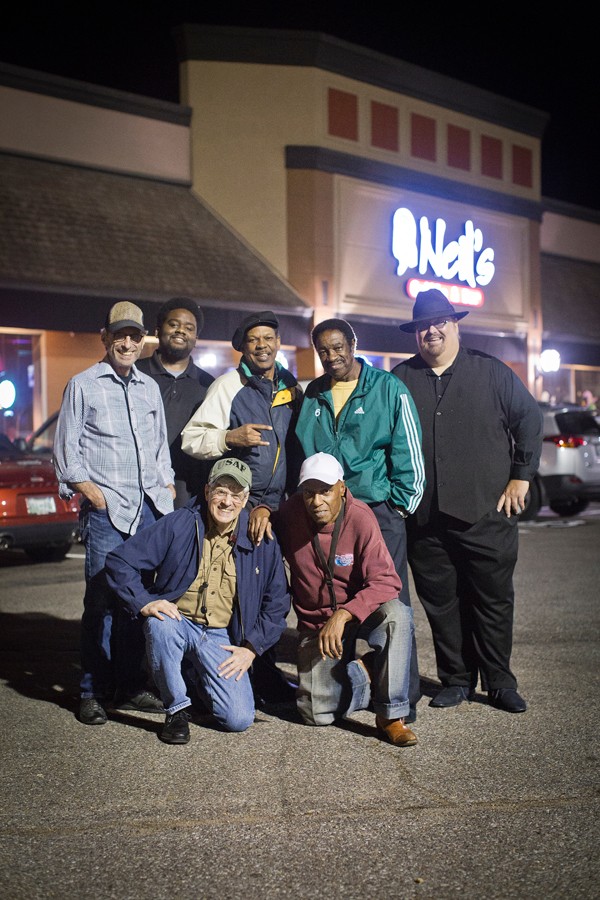 Justin Fox Burks
Justin Fox Burks
Elmo and the Shades
Some bar band.
You may be surprised to learn that you can see this band for no cover charge at least once a week. Welcome to Memphis.
Let’s introduce the band.
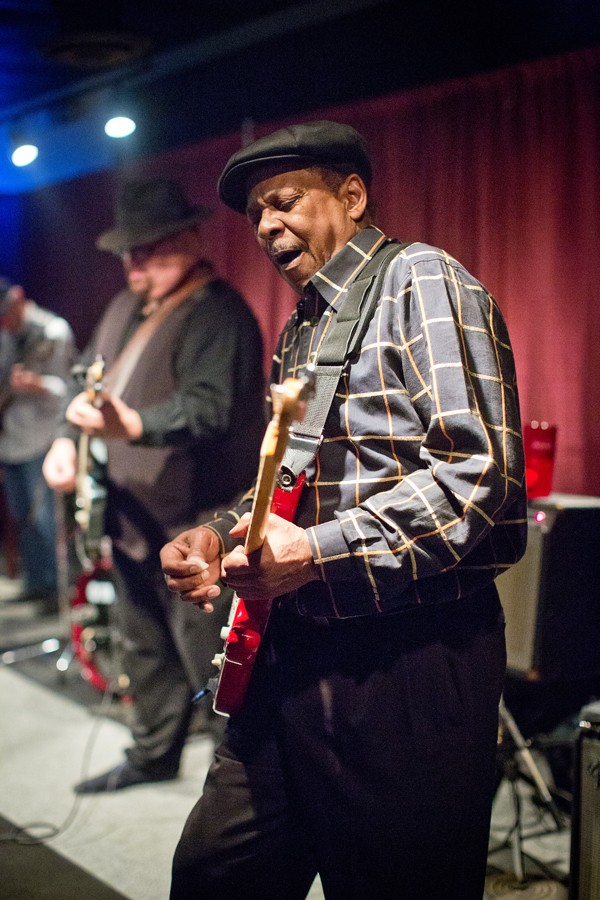 Justin Fox Burks
Justin Fox Burks
Harold Beane
Harold Beane
“I went to Hamilton [High School],” says guitarist Harold Beane. “I ended up on guitar from my neighbor Larry Lee, who played with Jimi Hendrix [at Woodstock]. So that’s my mentor. This was 1963, because he went off to college to Tennessee State. I couldn’t wait until he got back from college to show him that I could play a barre chord. That’s how it all started.”
Beane’s band auditioned to record at Stax, but the label didn’t want the guitarist.
“They said, ‘We like your group, but we don’t need a guitar player. We’ve got Steve Cropper.’ So I ended up working in the Satellite record shop. Ms. Axton hired me. I sold 45 records. I eventually ended up learning three or four chords, and William Bell came and took me on the road. I was just out of high school.”
Beane, like the others in this story, was part of a later generation of musicians at Stax. When early bands like the Mar-Keys or the MGs began to tour, younger musicians — notably the Bar-Kays — filled in during the arc of Stax’s success that preceded the Redding plane crash in December of 1967. The label’s next phase brought Hayes’ hits and the second coming of Rufus Thomas in the early 1970s. These musicians not only backed the hits of that era, they played with some of the most important talents of their time.
“I came to the recording studio one day, and Pat Lewis of Hot Buttered Soul, which was Isaac Hayes’ background singers, asked me if I wanted to play guitar for George Clinton,” Beane says. “They had done background for Isaac, George Clinton, Jackie Wilson, Aretha Franklin … I can go on and on. So she called George. I met George in Cincinnati, and the rest is history.”
Beane spent five years in Clinton’s Funkadelic and played on America Eats Its Young in 1972. He also played for Little Richard. Eventually, he had a son and settled in Atlanta, working with longtime collaborator William Bell. Beane went to work for IBM and stayed in Atlanta until three years ago. When he would come home to Memphis to visit his mother, he looked for Larry Lee, who was playing with Elmo and the Shades.
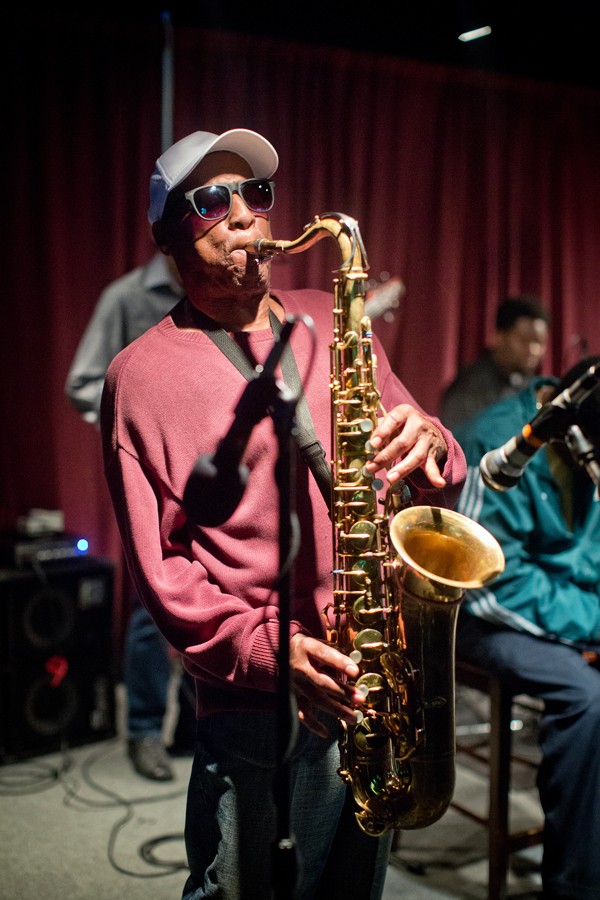 Justin Fox Burks
Justin Fox Burks
Tommy Lee Williams
Tommy Lee Williams
“Harold [Beane] was playing with us in the first band I was in,” saxophonist Tommy Lee Wiliams says. “Willie Mitchell started us rehearsing at his house. But my first big thing was in college at Tennessee State in Nashville. I was playing with Jimi Hendrix — me and another older guy playing saxophone. It was wild. We were playing at the Del Morocco to lots of Tennessee State students. He stayed upstairs over the club.”
Hendrix left the Army in 1963 and moved to Clarkesville, Tennessee, before moving to Nashville. Those years in Hendrix’s life are often glazed over as the “chitlin-circuit years,” but the scene around the club was part of Nashville’s unheralded African-American music scene of the 1960s. Hendrix lived with lifelong friend Billy Cox, who allegedly owned, and did not get along with, a pet monkey, according to Steven Roby’s Becoming Jimi Hendrix: From Southern Crossroads to Psychedelic London, the Untold Story of a Musical Genius. That band, the King Kasuals was the launching pad for Hendrix’s work with Little Richard, Don Covay, and the Isley Brothers. Later, after his Experience years, Hendrix returned to this group of people, building Band of Gypsies around Cox and Buddy Miles, who met Hendrix during this time. Larry Lee joined Hendrix onstage at Woodstock, trading solos like they had done back in Nashville.
Williams’ involvement with Willie Mitchell led to gigs at some of the most legendary parties in Memphis history. Elvis hosted a string of New Year’s Eve parties at the Manhattan Club throughout the early 1960s. Although in those days, it was not a welcoming experience for everybody.
“We had uniforms. Willie Mitchell mostly played for it. But this one time, Willie had to go out of town, and he put us in there. We had to come in the back door. Because [the front] was for high-class folks. The bandstand had a door. We’d go out that door and stand outside,” Williams says. “Anyway, [Elvis] would have these parties, and he’d have all these women. Man, I’m talking about some of the most gorgeous women you’d ever want to see. He’s sitting there like at the end of the table like he was the chairman of the board. Nothing but women, all the way down on both sides. He’s sitting up there cooling. I said, ‘Damn, this cat here is something else.'”
Williams and Beane were also members of the Isaac Hayes Movement, the band that toured and recorded with the enigmatic singer through his rise to greatness. Hayes’ greatness took several forms, all witnessed by Hayes’ lifelong friend and Shades trumpeter Mickey Gregory.
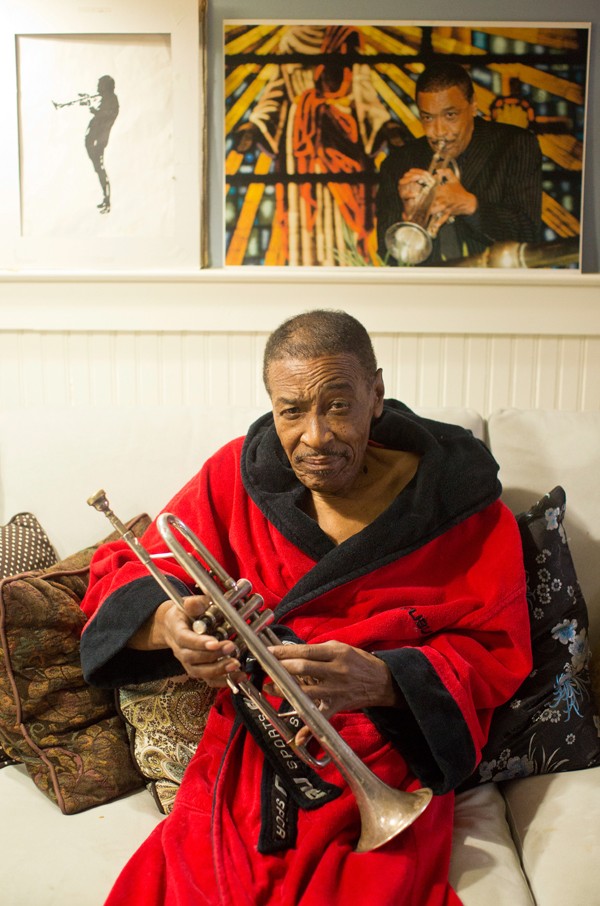 Justin Fox Burks
Justin Fox Burks
Mickey Gregory
Mickey Gregory
“I took Isaac on his first gig, when he was 18 years old,” Mickey Gregory said last week at the Shades’ weekly Wednesday night gig at Neil’s Music Room.
“We were both in the same shape,” Gregory says. “Sometimes, we would make a gig outside of the city. Dude would run off with the money. Sometimes you’d make a dollar. Buy a bottle of corn whiskey and a hamburger. Sleep on the food table of the counter ’til daytime, before you tried to get back to Memphis. [He stops to silently emphasize that it was a very dangerous time for black traveling musicians.] We went through some hard times. There is a Penthouse interview from 1972. [Isaac] explains a lot of that stuff. If you ever come by the house, I’ll let you see that magazine where he says that.”
On Friday, photographer Justin Fox Burks and I ring the doorbell and are greeted by Gregory, smoking a cigarette and wearing an electric red and black-trimmed bathrobe. My Southern Protestant upbringing had not prepared me for this. But no one I know has ever answered a door in such a badass way. In we go, and Gregory shows us the interview in which Hayes talks of himself and Gregory and sleeping on craps tables after gigs. The photo spread is strange enough to defy description, until …
“We called that ‘FFO,'” Gregory says, “for Far Fucking Out.”
“I think the bathrobe is awesome,” Burks says. “Do you want to put a shirt on for some pictures?”
“I’m Kool and the Gang,” Gregory says, meaning no.
Gregory’s friendship with the man he calls “Bubba Hayes” is the subject of a book he is writing. He reads the first chapter aloud and leaves us mesmerized with the story of driving to Hayes’ first gig.
I’ll leave that story and a trove of off-the-record delights for Gregory’s book.
Gregory was a source for Robert Gordon’s Respect Yourself: Stax Records and the Soul Explosion. Reading Gordon’s book before going to see Elmo and the Shades turns the night into an immersive experience, perhaps akin to experiencing the National Civil Rights museum after reading Hampton Sides’ Hellhound On My Trail.
These musicians changed music: They broke the hold of the 45 single and kicked off long-play music that led the way for the expansive remix and electronic dance forms of the 1980s and 90s. Hayes and Gregory formed a symbiotic relationship, with Gregory assuming more responsibility and more favor as Hayes rose to power. He helped Hayes assemble the bands that would tour with him, record with him, and endure the mayhem of life at Stax in the late 1970s.
“We were hoping for a hit record with Isaac’s Hot Buttered Soul,” Gregory says. “In the interim, I was putting together a band, really for David Porter. Isaac began to break out real quick. Porter didn’t like it, and I don’t blame him. But he didn’t realize that I had a history with Isaac since he was about 12 or 13 years old. So I had to go. I had had some hard times, and he would more or less support me and my family. So I had to follow that thing. I took the guys from the band that I was putting together for David, The Soul Spacemen. He had bought uniforms and everything. But I had to do what I had to do. That was the first Isaac Hayes Movement.”
Gregory was with Hayes when he was part of a negotiation with Mayor Henry Loeb in 1971, as tensions rose over a city-imposed curfew and a crucial benefit for a sick member of the African-American community. Rob Bowman, in his Soulsville, U.S.A.: The Story of Stax Records, outlines the event, as Hayes is called to represent the black community with the legendarily recalcitrant mayor following the assassination of Dr. Martin Luther King Jr.
“Henry was … we all know what he was,” Gregory says. “He used a lot of savoir-faire while talking to us. But he just started, and it was an exercise in futility. This one city councilman [Jerry Blanchard] — and I don’t have to say white because there were no blacks on the city council then. He had balls enough to go out with us. It was just me and Isaac and him. We went through the neighborhoods and quelled those riots. Our last trip was to Binghamton, and he got out of the limousine with us then. He had balls. But nobody was interested in anything but Isaac.”
Gregory and Williams were both in The Isaac Hayes Movement for the 1972 Watts Summer Festival concert that drew more than 100,000 people and became the film Wattstax. Williams, who played on Rufus Thomas’ hits from the early 1970s, including “Push & Pull” and “The Breakdown,” recalls the old man of Stax calming what might have been a volatile situation.
“What happened was, they were trying to get the people not to come out on the grass,” Williams says. “Rufus Thomas was already out, getting ready to do his show. He was trying to tell them, to talk to them real nice and not make them mad. I know he talked 30 minutes or more. Sure enough, everybody started walking up, going on back. We had ran out and got back on the bus and shit, we were scared. All them people, man? Dang. I just knew it was going to be a riot. Anyway, it wasn’t. Everything turned out all right. We did the show. Smart dude. That man was smart and kept it together.”
The fall of Stax engendered a lot of enmity among some of the participants, and the transition from world stage to normal life and the “golden years” has not always been easy.
“We had a ball out there. We were making money,” Williams says, noting the diminishing opportunities in today’s music industry. “The people have changed. It’s not like it was back in the day, when we were coming up. Everybody was more together. It’s kind of distant now. It’s not as tight as it used to be.”
Gregory holds a special enmity for Johnny Baylor, an alleged gangster from the north who cultivated his own locus of power in an increasingly dangerous and destructive way. You should read Gordon’s book if only for the whole story on Baylor and Gregory’s involvement in it.
“Those were some great days,” Gregory says. “But they turned into some bitter days. I mean bitter, bitter, bitter days. … I sat and watched that thing unravel under the hands of one person. I was just as crazy as he was. My pistol was just as big as his was. He knew that. We never had words. He whipped a lot of people at Stax. Pistol whipped a lot of people. A monster.”
Some people still don’t want to talk about Baylor.
“Nobody else ever had the balls to do it,” Gregory says. “Because, one, I’m still alive. So I don’t give a damn. Read my book.”
There’s a lot more history going on in Elmo and the Shades: Drummer Hubert Crawford Jr. played with James Brown and has been an essential element to the Eric Gales Band. Ben Cauley, the original Bar-Kay and survivor of the plane crash that took the life of Otis Redding, is a regular on trumpet and sings a few numbers. Drummer Brian Wells (John Paul Keith) also plays regularly.
“I knew Elmo from coming to Memphis and looking for Larry Lee,” Beane says. “That would be the first thing I would do while living in Atlanta. I’d come visit my mother, visit Memphis, and I’d look for Larry. Elmo had Mickey Gregory and Tommy Lee [Williams]. They knew me and said, ‘Why don’t you hire Harold?’ I went out and met him and have been playing with him for about two and a half years. I’ve enjoyed picking my guitar back up.”
“Cats come out here I hadn’t seen [in years],” Williams says. The goodwill among the old soulsters is something to behold. “Once they come out and see we’re out here, they come back and sit in with us. But we got a bad drummer man. Them other guys can’t touch our drummer. We let them play. But to go up behind him? He played with James Brown. You’ve got to be a bad drummer to play with James Brown.”
The members of Elmo and the Shades have impressive histories, but in a town with the kind of music legacy that Memphis has, they are not all that unusual. “Earl the Pearl” Banks plays weekly on Beale Street at Blues City Cafe and frequently at Huey’s. Banks was in early bands with Teenie and Leroy Hodges of the Hi Rhythm Section. Leroy Hodges and Hi-Rhythm keyboardist Archie Turner back him up every Tuesday at Blues City Cafe. Eddie Harrison and Tommy Burroughs are other examples of musicians with bands that have jaw-dropping back-stories.
Elmo Lee Thomas has been running his show since the first blues revival that followed the Blues Brothers and the rise of Beale Street in the early 1980s. Williams has been with the Shades for almost 20 years. Michael Toles of Bar-Kays 2.0 and Skip Pitts (also of the Isaac Hayes Movement and the Bo-Keys) are past members. Larry Lee was a member of the Shades, until his death in 2007.
“It just started one musician at a time,” Thomas says of his amazing band. “We all come together and try to put the sound down.”
And that they do.
 Courtesy of Robert Johnson
Courtesy of Robert Johnson  Justin Fox Burks
Justin Fox Burks  Justin Fox Burks
Justin Fox Burks  Justin Fox Burks
Justin Fox Burks  Justin Fox Burks
Justin Fox Burks 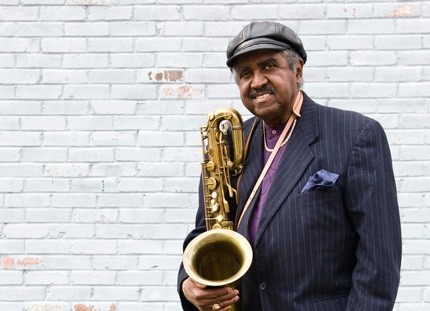 The Bo-Keys
The Bo-Keys 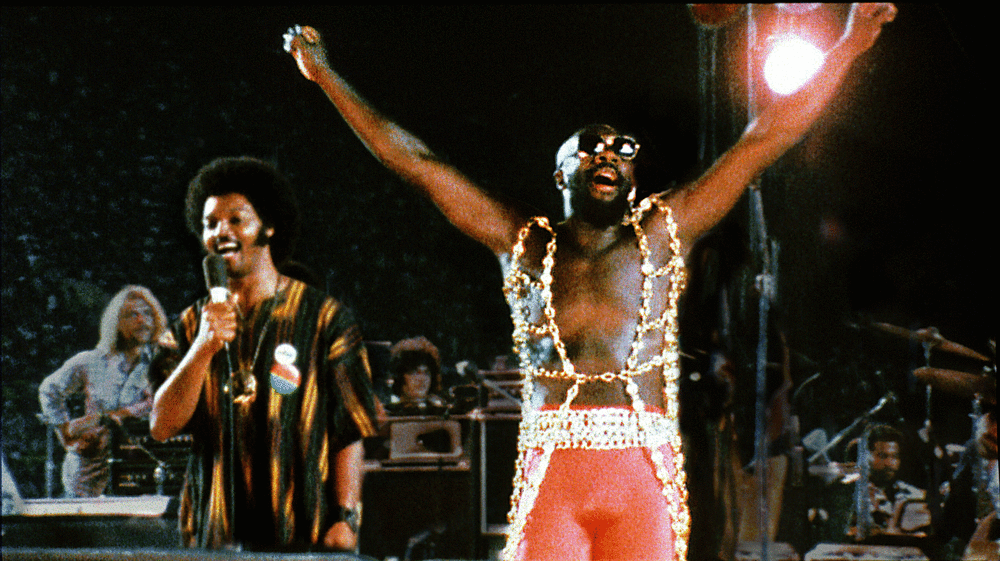
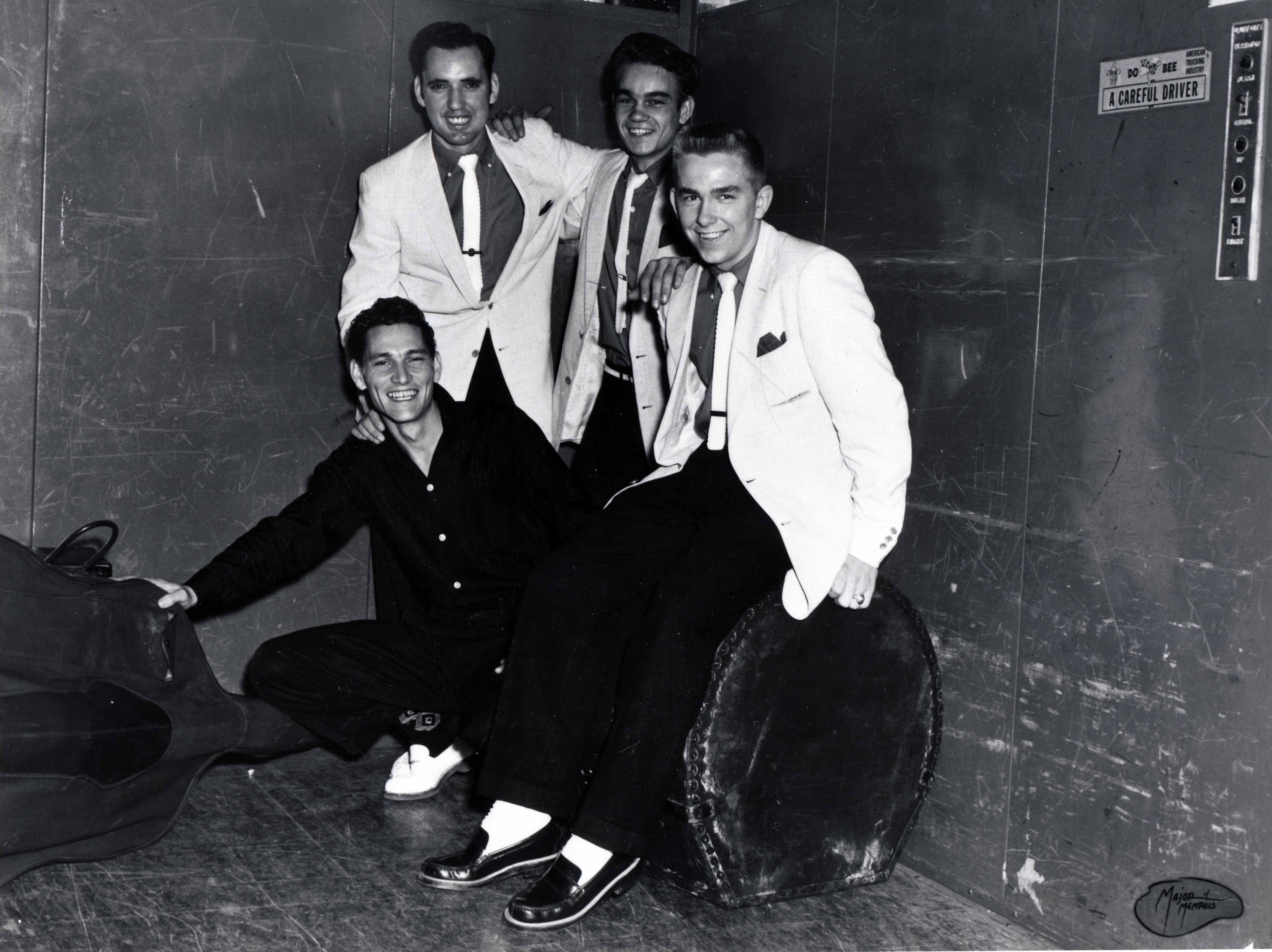
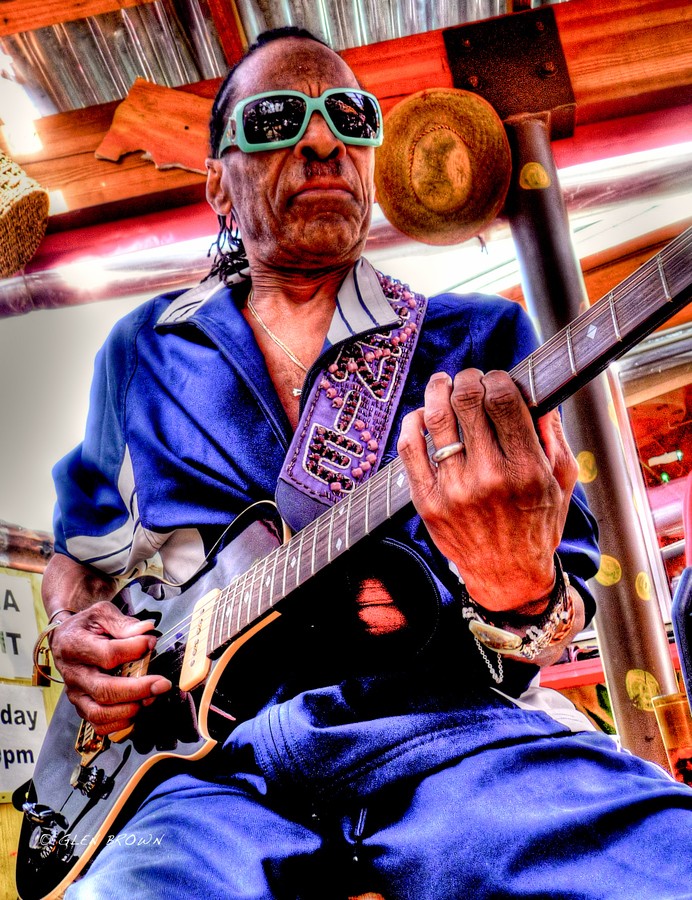 Photo: Glen Brown
Photo: Glen Brown  Sbukley | Dreamstime.com
Sbukley | Dreamstime.com 